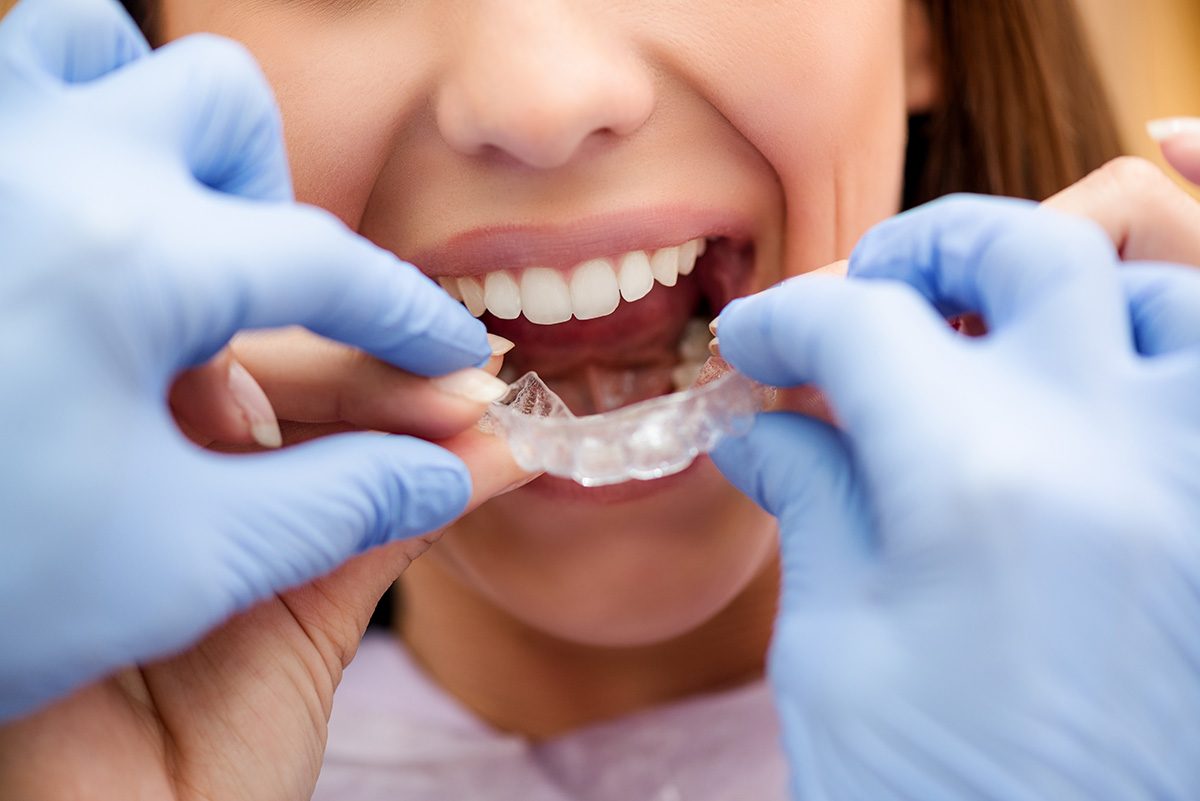Are you considering Invisalign® as a way to straighten your teeth? You’ve probably read that this sort of aligner tray can straighten your teeth without all the aggravations that come from braces. While that’s partially true, you’ve also probably heard that side effects are possible with Invisalign®. That’s also only part of the story. Here’s everything you need to know about whether you can have an allergic reaction to Invisalign®.
What’s Invisalign®?
Invisalign® is a product designed as an alternative to braces. Your dentist will take measurements of your teeth. Then, he or she will create Invisalign® molds that fit over your teeth. These molds are almost invisible, which is part of their appeal. They’re not as distracting as regular braces. They’re also disposable. Every two weeks, you remove your current set and replace it with a new one. Over time, Invisalign® straightens your teeth in the same way that braces would. Best of all, they’re much less aggravating to use than regular braces.
Is an Allergic Reaction to Invisalign® Possible?
The answer is yes, but the reality is that it’s extremely unlikely. Like most rare allergic reactions, only a small subset of the population will experience even mild irritation. For most people, Invisalign® will do nothing other than straighten your teeth.
For the unlucky few, the issue only somewhat relates to the product. Some people have a saliva issue. The inside of their mouth doesn’t produce enough of this moisture. In such instances, a product such as Invisalign® is a source of irritation. Its presence prevents the production and circulation of saliva. Others struggle with the plastic used in the product. So, technically, Invisalign® isn’t the cause of the irritation. It’s the trigger.
How Does the Trigger Work?
When you have a plastic allergy, any contact you make will trigger a reaction. The point of Invisalign® is that it’s plastic and not metal. That allows it to appear transparent, hiding the fact that you wear braces. Since the aligner trays go on top of your teeth, they’re in constant contact with the interior parts of your mouth. Your tongue, gums, and teeth are all subject to irritation from the plastic allergy.
How Does a Person Test for the Allergy?
Before taking any steps, you should consult with your dentist. Tell him or her that you are fearful of an allergic reaction. Your dentist will have had some experience with the problem and can offer guidance on how to proceed. A plastic test would be the first step.
The dentist will ask you to take a small piece of the same material used in Invisalign® and, with a piece of tape, attach the plastic to your skin. Then, you’ll wear it for a few days. If your skin experiences a reaction, you have an allergy to the main substance in Invisalign® so, using the product could cause problems. If your skin doesn’t react to the plastic, you’re among the overwhelming majority of people who have no issues with Invisalign®. You shouldn’t try this test without supervision from your dentist, though.
Your dentist is unlikely to recommend the removal of Invisalign® to test for allergies. The explanation for this is that you’ll reset the effort of straightening your teeth if you don’t wear the product for a few days. A dentist will only suggest this option if he or she is worried about a serious allergy.
How Serious Are the Reactions?
If you are one of the unlucky few to experience an allergic reaction, you’re most likely to notice in small ways. Your mouth will feel more sensitive than normal. Your teeth, gums, and tongue will tingle or itch. You also might suffer twinges of pain. Anyone who suffers from a more extreme reaction should speak with a dentist immediately. Reactions are almost always mild. If you’re suffering more, something else is probably the cause.
In the rarest exceptions where an extreme plastic allergy occurs, tell your dentist immediately. The signs of an extreme allergy include breathing issues, hyperventilation troubles, and chest pain. You’ll need medical attention. Your dentist will also probably suggest that you stop using Invisalign®.
How Can You Stop a Mild Allergic Reaction?
Since you don’t want to remove your straightening unit, dentists suggest an easy way to reduce your allergic reaction. Remember that the problem is a lack of saliva in your mouth. The solution is simple. Drink plenty of fluids to replace the absent saliva. Cold water is best. Try to take several extra cups of water each day, even if you exceed the historically recommended, but not scientifically based, eight 8-ounce glasses of water.
Another step you can take involves more dental visits. A professional teeth cleaning every three months should reduce the irritation. The cleaning will also help with the production of saliva. This solution isn’t as effective as drinking cold water, though.
As you can see, fears over Invisalign® allergies are largely overstated. Even in the unlikely event that you do experience a reaction, you’re unlikely to suffer anything other than minor mouth irritation. Nothing about the topic should discourage you from considering Invisalign®.
See our Invisalign® providers in Vancouver and from Chilliwack to Whistler.






